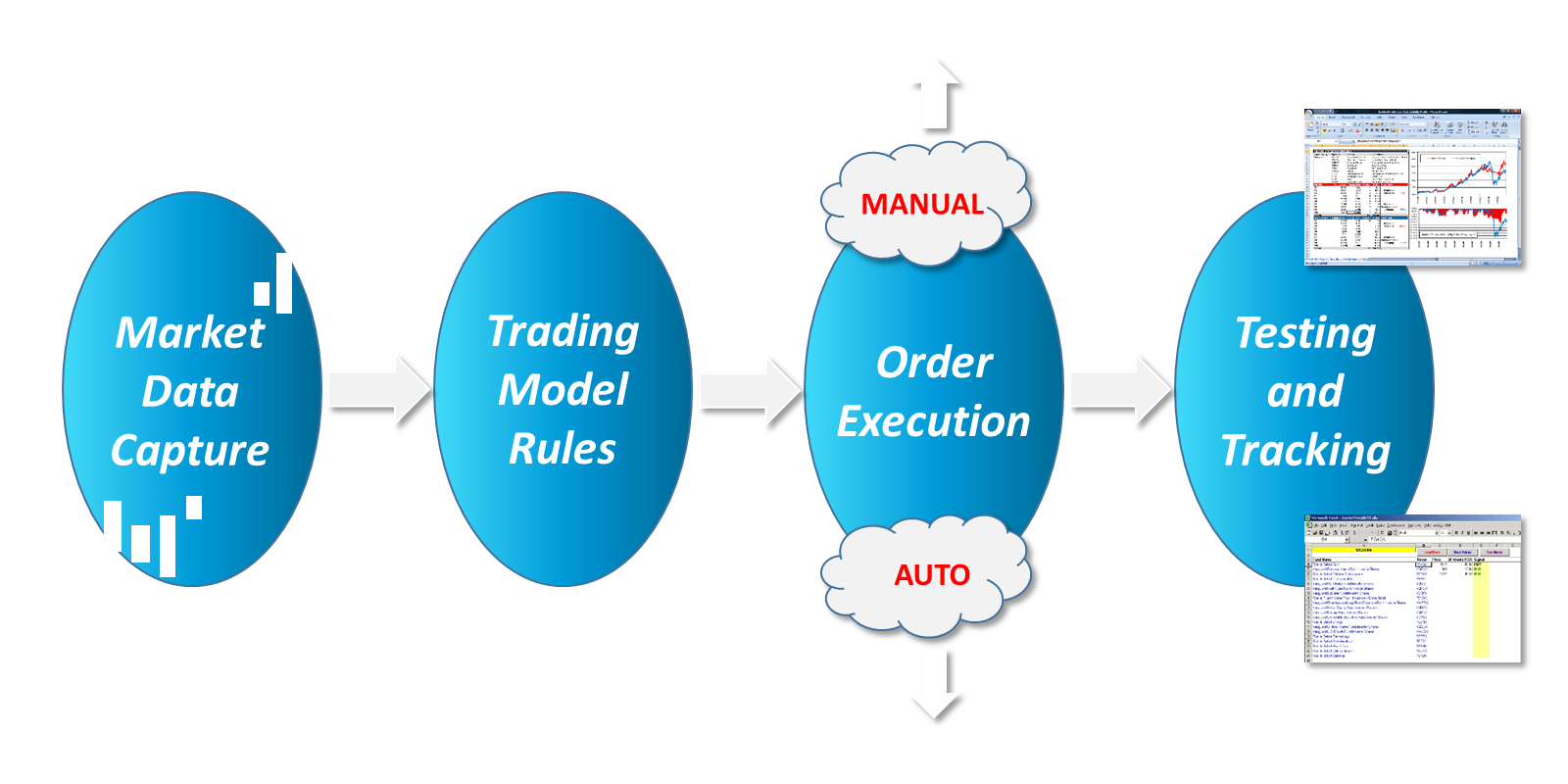
Articles
Building an Excel Trading Model Using an Add-In Toolkit
Constructing a trading model in Excel from commercially available add-in toolkits has distinct advantages, particularly for models based on standard technical indicators such as moving averages, stochastics, CCI, Bollinger Bands, etc. An add-in toolkit makes analysis...
Building an Excel Trading Model Using Formulas and VBA
Building a trading model from scratch using a combination of Excel formulas and VBA can be a lot of work, but has the advantage of full control over the model and what it needs to do. Individual spreadsheets are used for data capture, trade rule logic, and calculating...
How to Develop Trading Rules in Excel
Building a trading model in Excel involves developing the trading rules or logic that drive the buy/sell signals, capital allocation, and risk management. There are several types of trading models, each requiring a different approach to the trading rules: Fully...
How to Import Market Data Into Excel: Part 5 SQL to a Price Database or Data Warehouse
< Back to Part 4 The final option is significantly more "techie" than the previous ones. SQL calls from Excel to a database involve either embedding SQL code into Excel's VBA, or purchasing an add-in that gives you a graphical interface to do the same thing. This...
How to Import Market Data Into Excel: Part 4 Web Query to a Free Internet Price Data Provider
< Back to Part 3 Using Excel's native Web Query capability to extract data from Internet pages, you can automatically import market data from free sites such as Yahoo! Finance, Google, MSN, AOL, etc. This works fine for delayed and end of day data. The benefits of...
How to Import Market Data Into Excel: Part 3 Real Time DDE Link from a Data Vendor or Broker
< Back to Part 2 For large amounts of historical or intraday market data a DDE link is the best tool for Excel. DDE (Dynamic Data Exchange, sometimes called Active-X) is a simple and proven technology. It reaches out to a database and automatically populates your...
How to Import Market Data Into Excel: Part 2 Text File Excel Import
< Back to Part 1 Importing from text files is one of the most common ways to get price-volume data into your Excel spreadsheet. The import operation is usually done using some automated VBA code in Excel, or with a batch process which is run on a timer (for...
How to Import Market Data Into Excel: Part 1 Manual Entry or Copy-Paste
Importing market data into Excel is the first step in building a trading model. Market data such as prices, volume, spreads, dividends, etc. is needed to feed a trading model's calculations. Manual entry or copy and paste is the most rudimentary way to get...
Using Excel Portfolio Sofware
Portfolio software for Excel is ideal for serious investors looking to increase their returns and minimize their risks. There are various highly effective functions for this type of Excel tool, and also some pitfalls that you ought to avoid. Excel portfolio software...
Tracking Your Excel Model’s Live Performance
Now, let's assume you've made it this far. The beauty of Excel is that you never have to "hard code" your idea. You can experiment and throw out anything that doesn't work without any cost other than your time. You will throw out lots of work along the way, but if...
